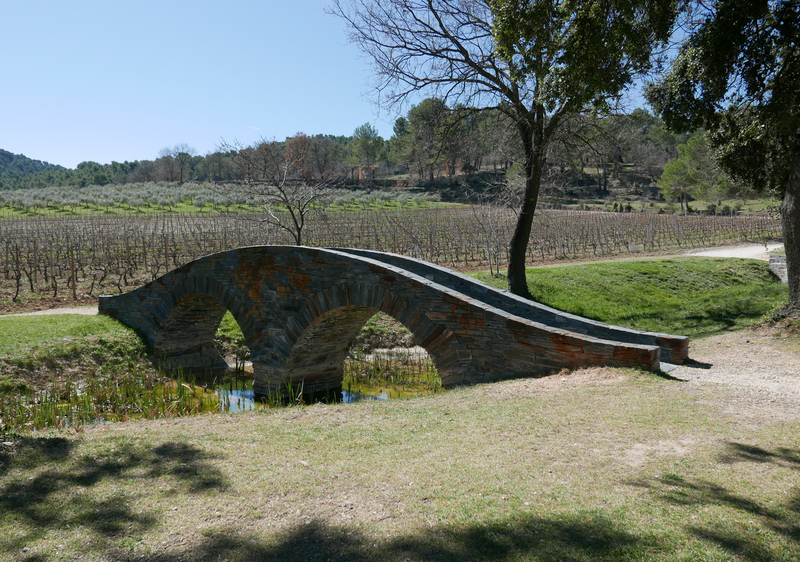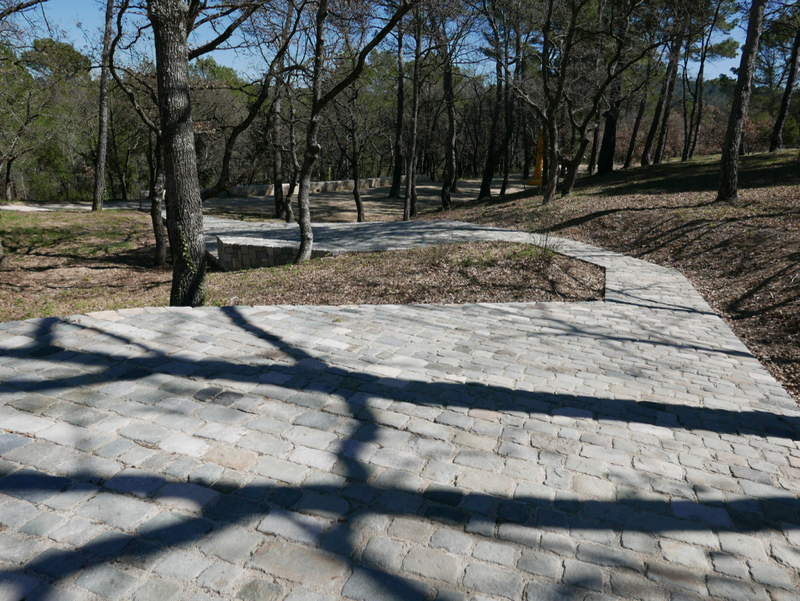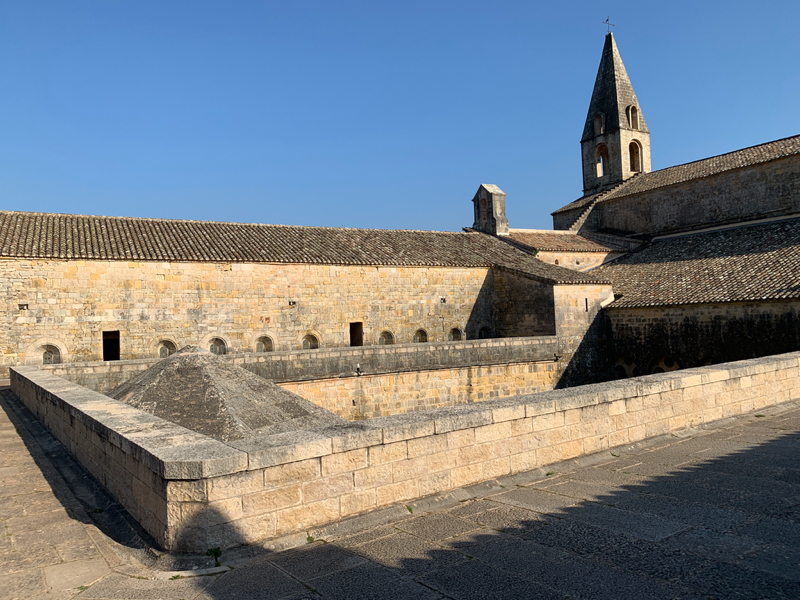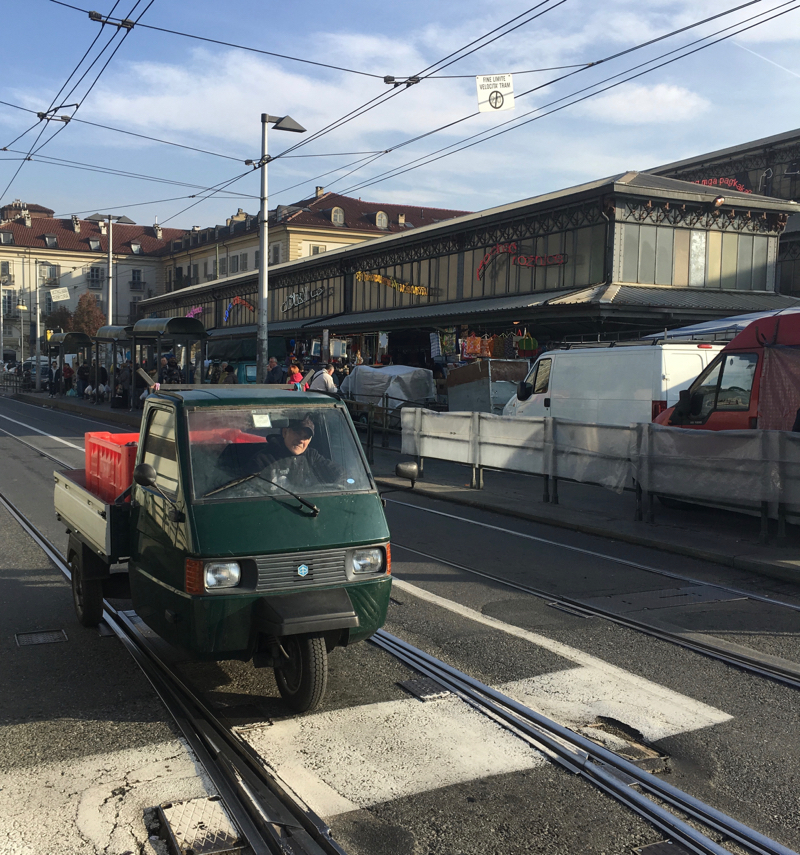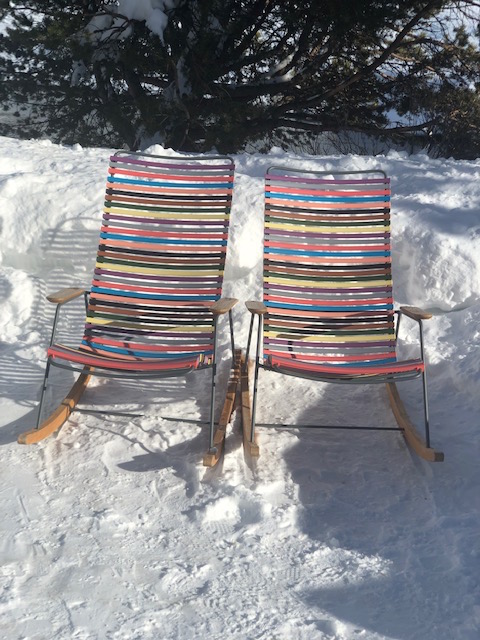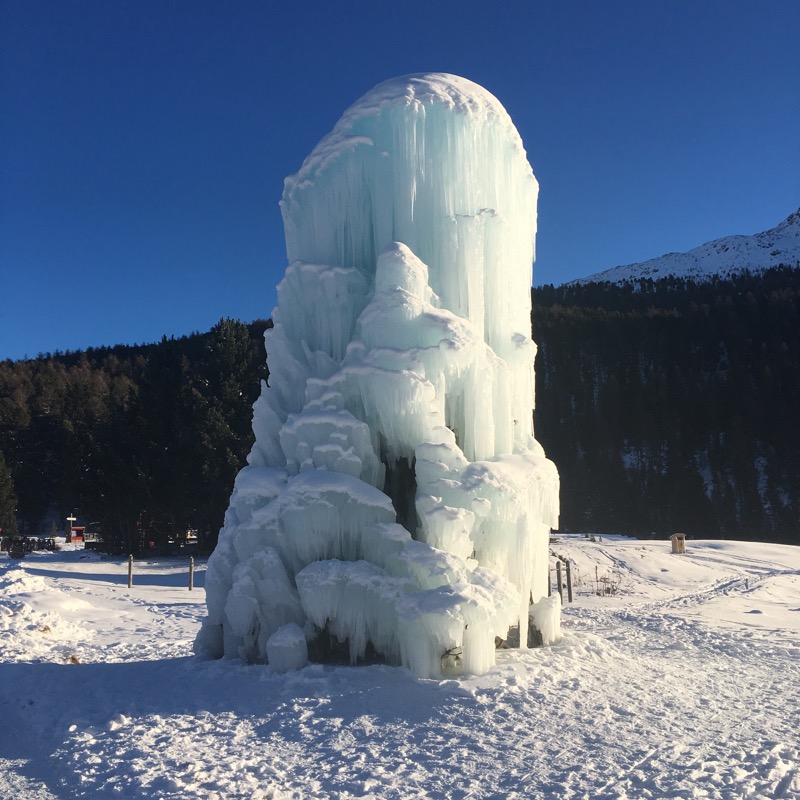Find your inner balance at Villa La Coste in Provence
In the countryside north of Aix, the abstract palette of Cézanne finds its contemporary expression in the stellar art park of Château La Coste. The grandest names of contemporary architecture and art convene liberally on the property where the owner offered generously a carte blanche for creativity.
Inserted into the rolling curves of the vines is also the ‘Palace’ designated Villa La Coste. A bright hotel chiselled into a hillside nesting an eco spa and a gastronomic restaurant. From the vineyards converted into biodynamic through the organic “potager” of the chefs to “clean” cosmetics, here the contemporary toxic lifestyle gets a break in this nest of eco pampering for the body and the urban mind. Now, in spring is the best time to stay, but fall’s calming hues are pleasant too. I have been three times and will come back again, for the art commissions by the Irish owner, a generous and ambitious patron, keep sprouting.




Shaded from the summer’s solar inferno, dug into a pine and oak forested ridge, the contemporary art cum architecture project lights sustainability as its mission and the wise step into the future. Bathe in the forest as the Japanese do (Shinrin Yoku), meditate on Tadao Ando‘s chairs, reflect on the pebble-paved pool surrounding his art centre and contemplate light at Ando’s modernist (a remake of a 16th-century chapel) tribute to Henri Matisse’s Chapelle du Rosaire in Vence. The chapel overlooks organic vineyards and gently flowing hills of Luberon. Behind the closed doors where a play with light awaits your wonder, still I was even more intrigued by the foursome tree spiking up in its yard. The Provencal spring scent of rosemary guided me further into the forest paths. Introspection while feeling the connection with nature, even the universe, organically weave into your mindset. There is another chapel down in the gardens, the crystal-clad walls contrast with the plant wall exterior in a striking balance of opposites.

Beauty, balance, nature
Balance also permeates some of the art installed at Château La Coste. The vast property is covered with vines, olive groves, art, contemporary architecture under its greatest names and a hillside forest that ushers you into the guest Villa. A Brazilian artist Tunga raised a sculptural allegory titled “Psicopompo” (2011). A trio of steel, Chinese magnet, Bohemian crystal and Peruvian quartz named after a mythical Greek scale used to measure a man’s soul. Timeless art.
Less naturalist, the grandson of one of the greatest French painters of the past century, Paul Matisse installed his mechanised “Meditation Bell”. Its deep sound vibration echoes in a creek paved with lanterns. Lit at night for a contemplative stroll, it sparks those after-hours reserved to the hotel’s guests.

The 28-suites and studios housing Villa La Coste make for the most luxurious accommodation in the entire Provence. You would have to travel to the Mediterranean coast to find anything comparable (like La Reserve de Ramatuelle). The most contemporary amenities were designed by the French Tangram and Hong Kong–based architect André Fu, complete with inserts like the glass and steel table by Jean Nouvel. Fu also created the airy bar, a cosy, with art, design, travel and classic literature books filled library, and the elemental spa. Light enters every inch of the Villa La Coste. An outdoor heated pool for leisurely dips, and lounging on the sun in the gardens by the restaurant keep the guests relaxed.


Spa time at Villa La Coste
The organic spa concept of east-meets-local ingredients was mastered by Aman‘s former spa director Greg Payne (London’s Connaught) embraces Provence into the spacious holistic escape. Organic oils, natural salts, grains, seeds in customised scrubs, scented muds tinted by natural pigments, and cosmetics by the British brand Ilá to pamper your face welcome all seeking rejuvenation and rest.
Across two floors, about a dozen of treatment rooms include one couples and a solo vaulted hamam for the scrubs and floating mud wraps. Inside the Villa La Coste spa you feel a monastic sense of harmony. Enveloped in a relaxing mud wrap on the zero-gravity flotation bed, the treatment eased my sore muscles and the mind. My query about the sound crystal bowl displayed at the spa lobby, vibrated an extra meditative touch into my zen cure. After showering it off, the therapist spread a nourishing butter all over my body so the skin-drying mud was balanced to perfection.


For anytime release, a coed dry sauna and a steam room invite all guests to pleasant heat therapy.
Veiled in a blanc muslin enveloping the lounge chairs, we sipped on organic tea and a late-afternoon tisane another day post-treatment prepared by our therapists. Water bottles accompany your every step all around the property, in-room they are included in your rate to keep you hydrated and plump.

Sustainable art born of luxury
Villa La Coste is an oenophile dreamscape of the Irish real estate magnate Paddy McKillen. With his former stakes in London’s top tier hotels (Claridges, The Berkeley and The Connaught) he was not a newcomer into the luxury accommodation sector. Nevertheless, here in Provence, the vineyards are the centrepiece around which all the artworks manifest. Back to nature in a sustainable business model is the halo for the future. Tadao Ando’s PAVILLON “FOUR CUBES TO CONTEMPLATE OUR ENVIRONMENT” massively illustrate the damaging vanities of our society. As if underlining the importance of climate, most of the artworks are exposed to the natural elements – frost, heat, wind, rain – collaborate on the evolution of each installation. The unfinished art, the change will draw you back.


The art park in the vineyards, olive groves, and rosemary patches surrounded by chestnut and oak forests is a work in progress anyway. The world’s most astute artists are invited to propose their vision. Some succeed in having their oeuvre realised, others may wait for years before their sketch is brought to form, some will not leave their mark on the estate. For me the most naturalistic and meditative is the damp cave of darkness-invites-light “Oak Room” (2009) by British artist Andy Goldsworthy. Weaved inside the estate’s ancient Roman walls, untreated salvaged oak wood from Burgundy was used as the organic material in this minimal waste artwork. Previous yoga retreats at Villa La Coste used it for a morning practice, but I cannot imagine keeping my limbs aligned and still inside this cold cellar.
Château La Coste is a truly international project of the greatest creative minds. The French landscapist Louis Benech (Tuileries gardens in Paris) created the orderly organic gardens, while the Chinese dissident Ai Weiwei recycled the cobblestones from Marseille’s recently renovated old port. The “Ruyi Path” symbolises power and good fortune, while it bridges the old Roman and the new estate routes.
Nurturing art at Villa La Coste
Frank Gehry’s open-air “Pavillon de la Musique” hosts concerts each June. Dug bellow the vines, the Château La Coste Art Gallery by Renzo Piano Building Workshop, invites regular exhibitions in its glass cum concrete underground structure. A photo gallery near the wine tasting room allows space for the camera art. Strolling with my Leica, capturing the objects and moods that flirted with my eyes, I realised that so much at the Château and Villa La Coste is a play with light, an exchange between art and nature. I was mesmerised.
So much more awaits you. Get some sneakers ready for the gravely stroll and participate in the two hours lasting Art & Architecture Walk in English daily at 2:30pm.
Inside the villa, the art, design and travel focused library nourishes your intellect, while the playroom behind awakens the inner child.


Dining at Villa La Coste entitles the staying guests to a healthful, delicious breakfast served in the lobby cafe or laid in your room on a glass table by Jean Nouvel. Topped either with a polished stainless-steel sculpture by Tom Shannon (the artists behind the “Drop”) or another unique oeuvre, perhaps a Damien Hirst print. Local dairy, creative assortment of breads – I love that loaf with figs, incredible house jams with slivers of oranges and chunks of peaches, daily smoothies served with custom-made eco bamboo straws, poached, scrambled or eggs Benedict, even gluten-free pancakes, all prepared with the greatest care. The minibar’s almonds and daily refreshed fruit basket make for ideal, balancing snacks. In chocolate-coated almonds and the estate wines in the room are ripe for the indulgent moments.


The restaurant is no longer helmed by the Marseille’s three Michelin chef Gérald Passédat, but the original team serves a decent French cuisine overseen conceptually by another starred chef Helene Darozze. The wine cellar is international. A fire pit teases tastebuds just a short jeep ride on the property, where Francis Mallmann’s Patagonian fire cuisine rock and rolls any palate in a casual in and outdoor setup. Even vegetarians and vegans find some superb plates in Mallmann’s Argentina meets Provencal cuisine. Unlike his Miami branch at the Faena superficiality and I dare to say better than his 1881 restaurant in Mendoza where I dined over a decade ago.
I will return, hopefully to my favourite suite where the pines seclude me behind the desired inches of privacy set apart from the public field of art. An olive tree planted just behind the bathroom window soothes you as you bathe in the extra large egg shaped marble bath. Aaah, balance feels so good!



